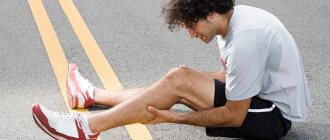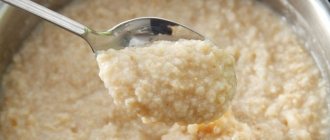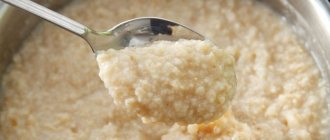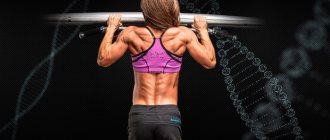Thank you, dear friends, for sending such articles! This time a dose of motivating energy drink is given to us by reader Andrey Korol , who proved by personal example that even the most ordinary office worker CAN overcome the seemingly unrealistic distance of 100 km. Guys, there is a lot of useful information in this post! Let's read. We admire. Let's cheer up. And we conquer new horizons, of course.
Perhaps it all started with my love for long walks and with a vague desire to someday overcome the Ironman distance. Unfortunately, Ironman is not yet held in Odessa, but every year there is a traditional tourist trek “100 km in 24 hours along the Belt of Glory” dedicated to the liberation of the city during the Great Patriotic War. This year it was held for the 41st time, so Odessa Sotka is 5 years older than Ironman. Yes, yes! 
Preparation
I started preparing for the hundred part three months in advance, read the literature, planned the increase and decrease in load and... successfully failed the program.
Well, yes, first things first.
What did the preparation include:
- Two rules: “walk everywhere” and “the more walking, the better.” I installed a pedometer on my smartphone and tried to walk 40-50 km per week, and on weekends I went for long walks of 15-20 km.
- Morning exercises by Peaceful Warrior Dan Millman, it makes your body want to not just walk, but to dance.
- General physical training based on the training program “Healing Impulse” by Goltis. It is to her that I owe the fact that the muscles withstood a colossal load of hundreds. Goltis squats are amazing; in 10 minutes of exercise they completely exhaust the potential of the muscle, creating the basis for increasing endurance, and at the same time provide excellent training for the cardiovascular system.
- In the last month I added exercises for the foot muscles and running 5-7 km.
As I said, the preparation turned out to be insufficient, the muscles felt great during the distance, but the ligaments... yes, there should be a lot more running!
How much does a pedestrian walk in a day?
The distance a pedestrian travels in one day depends on the circumstances and lifestyle of the individual. Some people have sedentary work, while others have dynamic work. Doctors recommend taking at least 10 thousand steps a day.
A man is recommended to walk 56 km per week. (8 km/day), and for a woman 48 km. (7 km/day).
If you don’t have the time or the ability to travel long distances, you can try walking to work or, for example, get up one stop earlier, then walk to work, and do the same on the way home. Nordic walking” is becoming very popular now
" It involves moving at an accelerated pace with the help of special sticks.
Shoes and clothing
Day
Depending on the weather. We walked at a temperature of +8..+9 during the day, and +3..+5 at night.
- Sneakers or boots with hard soles. Advice - forget about running shoes, sneakers and other soft shoes, by the fortieth kilometer you will feel every pebble of the road. Don't buy new and cool sneakers; wear old, worn-out shoes. Your feet will thank you more than once!
- Socks – Don’t skimp on sports socks that quickly wick away moisture. I would recommend at least 4 pairs per hundred square meters! More is better, wet feet are a direct path to blisters.
- The T-shirt is also made of a material that quickly removes moisture from the body; cotton is guaranteed to get wet and in a good wind you will quickly freeze. And there will be wind, and what a wind!
- A windbreaker, preferably with a hood (otherwise it might blow your neck out) and with a bunch of external pockets for your phone, snacks and other useful items.
- Thin fleece - optional. I've seen a lot of people walking in a windbreaker and feeling great.
- Pants - your choice, from running tights to windproof pants.
- A hat or bandana – again, for protection from the wind.
Night
Cold, damp and windy.
- A warm windbreaker with a hood is a must. External pockets so you don’t have to reach into the internal ones in the wind. It will be great if there are reflective elements on it - there is no such thing as too much safety!
- Thermal underwear.
- Gloves and a hat are now mandatory.
- Scarf or buff. The air at night is very cold, plus the wind - you can easily catch a cold. I didn’t take the scarf, although my beloved wife suggested it, so I had to make a design out of a medical gauze bandage and one of the gloves, it looked like a stalker on a walk

- In case of rain - a simple polyethylene raincoat.
Run
During running, almost the same body movements are performed as when walking, but there is a flight phase (moments when the legs do not rest on the surface), and leaning on two legs at the same time is excluded.
As you run, the gravity of the earth is rhythmically overcome and your blood flow resonates with your running.
This allows you to fill all the capillaries with blood as much as possible, which improves the functioning of the entire body.
A.
Based on the distance, running is divided into the following types:
- Run in place. Its effectiveness is significantly lower than classic running, but its clear advantage is the ability to perform it under any conditions. No rough terrain or stadium needed, one square meter is enough.
- Sprinting does not require much endurance, but the athlete's maximum dedication
in order to reach the finish line as quickly as possible. - The average distance is from 600 meters to 3 km. It is impossible to run a long distance at top speed. Therefore, the tempo is chosen to be slightly above average.
- The long distance is defined from 2 miles to marathon 42 km. It is better to jog for such a distance.
Human running speed:
- Light running is not much different from walking. Travel speed is 5–6 km/h. This pace is suitable for people with musculoskeletal disorders, overweight and the elderly.
- Medium running pace is most often used for morning jogging
by non-professional athletes. Its speed is 7–8 km/h. - Jogging is used to improve the health of the body. The speed reaches 12 kilometers per hour. You can run at this pace for medium or long distances. During movement, the heart pumps a large volume of blood, which helps strengthen the heart muscle and saturate the entire body with blood. Jogging has a beneficial effect on the cardiovascular, endocrine, nervous, and immune systems.
- Sprinting involves developing maximum speed
with full dedication. Of course, it is impossible to run at a fast pace for a long time, so it is used only for short distances up to 200 meters.
Attention!
The maximum speed a runner can reach is 44.72 kilometers per hour. This result was shown by the Jamaican athlete Usain Bolt.
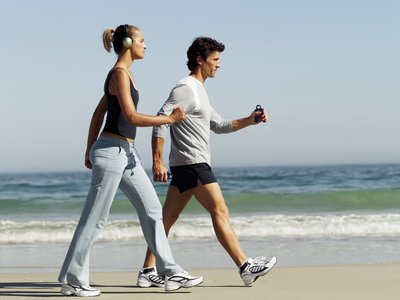
Definition of speed
The simplest but most accurate way to determine your running or walking speed is to use a treadmill.
.
If you don’t have it at home, then any gym definitely has it. In order to use it, it is not necessary to buy a monthly subscription; one day will be enough.
You can determine speed using simple arithmetic calculations. To do this, you need to select a specific section and find out its length. Then note the time of movement from point A to point B.
Suppose a distance of 300 meters was covered in 3 minutes. This means that 100 m were covered in 1 minute (300 / 3 = 100). Multiplying by 60 minutes (1 hour), we get the distance traveled in an hour (100 * 60 = 6000 meters). Thus, the pedestrian walked at a speed of 6 kilometers per hour.
How leg muscles work when walking
Benefits of walking
Equipment. Of the vital...
- The backpack is comfortable, with waist and chest straps. One of the must-haves is that it should have side pockets so that it is convenient to get a bottle of water without removing the backpack.
- A penknife and a lighter were not useful to me, but cases vary.
- A seat mat - you can sit anywhere and on anything It’s less work for your head, where to sit your own butt.
- A smartphone with GPS and an additional external battery for it. My iPhone 5, working only with the Runkeeper program, was ready to sit down in 10-11 hours. And orientation to the area and understanding how far it is to the nearest rest stop or populated area can be really important.
- Medicines and patches. Muscles and ligaments will hurt - painkillers such as paracetamol, ibuprofen and muscle ointment. There will be calluses too - apply plasters in advance!
- Headlamp. The manual one is inconvenient, although it wouldn’t hurt to have it as a spare. A set of spare batteries.
- Phones, preferably two, and working with different operators.
Health walking speed
For those starting a sports career (no matter how old you are, 9 or 90), walking is the best form of fitness.
Firstly, the load on the joints is the most optimal: while walking, it is almost impossible to harm yourself.
Secondly, you will need minimal equipment.
Thirdly, you can practice walking in any weather: in good weather, walk along the street, but in rain and ice, walk on the treadmill in any fitness club...
If you want to lose weight, you need to turn up the speed more to start burning fat. This is a fast walk, almost on the verge of running: 6-7 km/hour.
If you just want to warm up and you don’t have excess weight, you can move more slowly - at a speed of 3-4 km/hour.
Drink and food
- Water - in my opinion, mineral, slightly carbonated water is better. Drink a small sip every 10-15 minutes. Dehydration leads to rapid fatigue. I always had a half-liter bottle of water with me; it was hard to carry more. It’s great to have a thermos of herbal tea and additional tea leaves for it. You can ask for boiling water at any roadside cafe or at a rest stop to fill it with hot tea.
- Food – carbohydrates are everything. Simple and complex. One of the simple ones is glucose, sold in pharmacies. One of the more difficult ones is oatmeal with raisins, it takes longer to digest, but you go further, and your stomach isn’t so sad
- Dried fruits and nuts are a concentrate of vitamins, minerals and other benefits. I used the recommendation of experienced travelers - honey, walnuts, dried apricots, raisins, sesame seeds, lemon. In equal parts. Grind in a blender or simply cut into small pieces. Very tasty, both with porridge and tea.
- Fruits - bananas and apples, whatever is convenient to eat on the go.
- Special means - bee pollen (3-4 teaspoons per trip) and garlic cloves. I don’t know the method of action, but it becomes easier to move.
- For athletes - gels, bars and other doping


Conclusion
It is important to know your running speed in order to control the load perceived by the body and correctly calculate the timing of the load. You need to start your recovery at a slow pace, then gradually increase it. Over time, you can increase the distance. The most beneficial for health is walking and jogging. Movement is life and health. Be healthy!
This is interesting! What is the law of universal gravitation: the formula of the great discovery
Registration
I registered for 100 sq.m. 2 weeks before the start. Registration was quick and easy - you were given a card, a personal card for marking checkpoints, a list of emergency telephone numbers and two numbers in a reflective frame. The entry fee was only 50 hryvnia - victorious communism in its purest form 

A week before the start, the main task is to get enough sleep and reduce the training load to a minimum. It turned out well.
Day before the start. General recommendations are to take a day off, relax and regroup. I didn’t manage to rest, I started getting ready at 6 pm and managed to get ready by 12 am. Conclusion - you need to start earlier.
The night before the start. I slept well. If you can't fall asleep, it's okay - the previous week of good sleep will compensate for everything.
Morning before the start. Wake up, shower, pray, exercise, hearty breakfast, final check to see if everything is packed. Taxi - and here I am at the start!
Pre-launch registration was even easier. You call your number and receive a mark on your personal card about the start. Many thanks to the organizers - there was an opportunity to transfer things and food to any of the checkpoints. There were four in total at kilometers 15, 46, 55 and 79. I handed over warm clothes to KP-46, which is where, according to calculations, I was supposed to reach in the evening.
Half an hour before the start - a small official part, words about the heroes of the Great Patriotic War, wishes of good luck and some advice from the winner of the first hundred square meters: go up the hill, run down the hill, don’t stay long at rest stops.
So, 15 minutes before the start, final preparations, runners are warming up.
The number of participants is 414 people (315 men and 99 women) and the Siberian husky Lada, with its own number 51.
In general, Sotka is a cult event for Odessa, where you can see professional marathon runners, politicians, avid tourists, students, young people from Christian organizations, the Odessa Bearded Club and many, many others. Some prepared in advance, while others decided to go only the day before. Perhaps, I especially remember the guy in knight's garb, who walked about 30 kilometers in it.

10.00 Start! Fireworks in the air. The chronograph of the Great Patriotic War began its inexorable countdown...
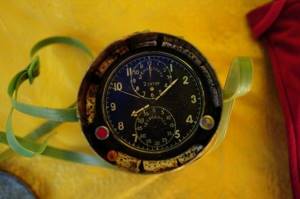
Features of walking
Each person moves at different speeds. It depends on the:
- His height and stride length;
- Age parameters;
- Physical condition;
- Time restrictions;
- Acceleration of the step;
- Topography of the area.
Typically, speed parameters are calculated taking into account:
- How many steps can a person take per minute at a certain load.
- Walking pace.
- The average length of a human step is 71 cm.
Now let’s look at specific generally accepted indicators using generally accepted measures of walking.
